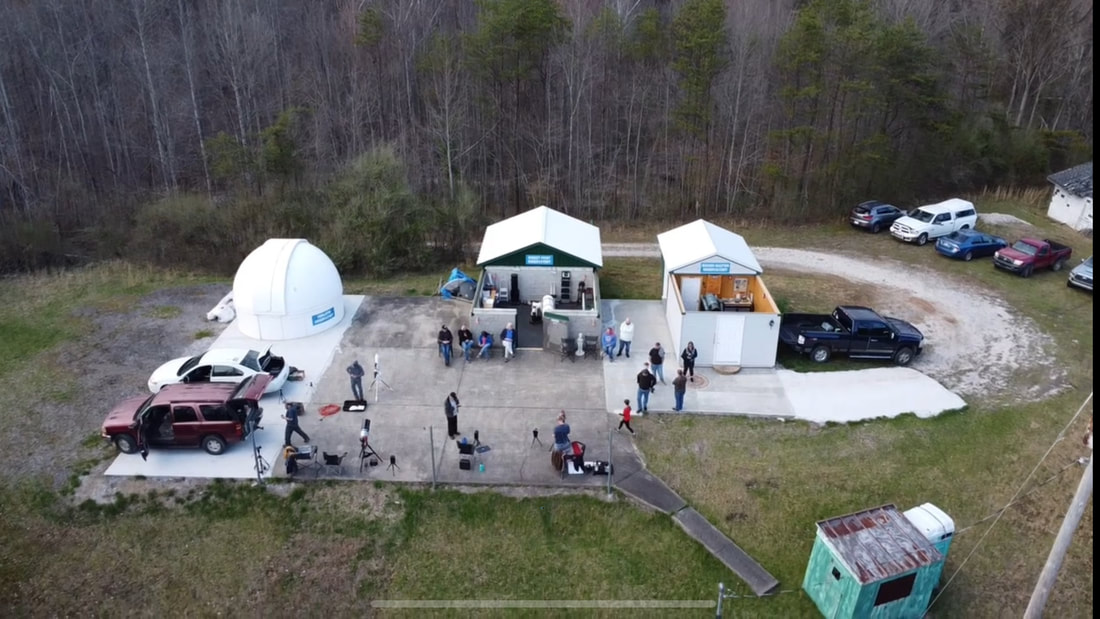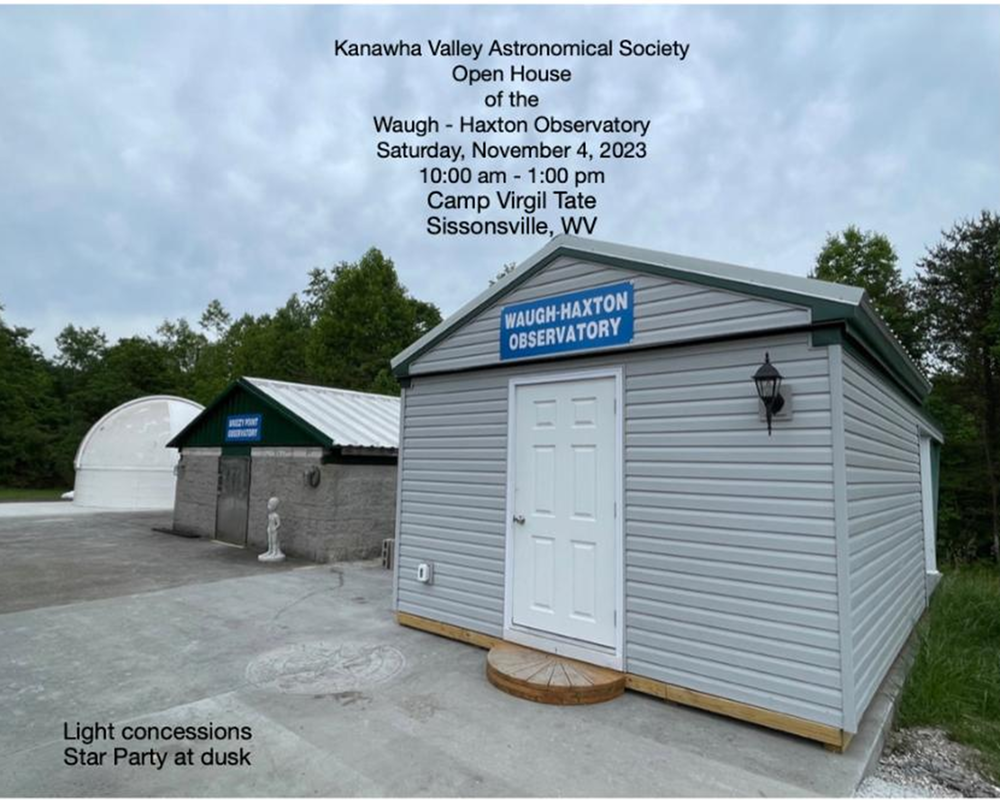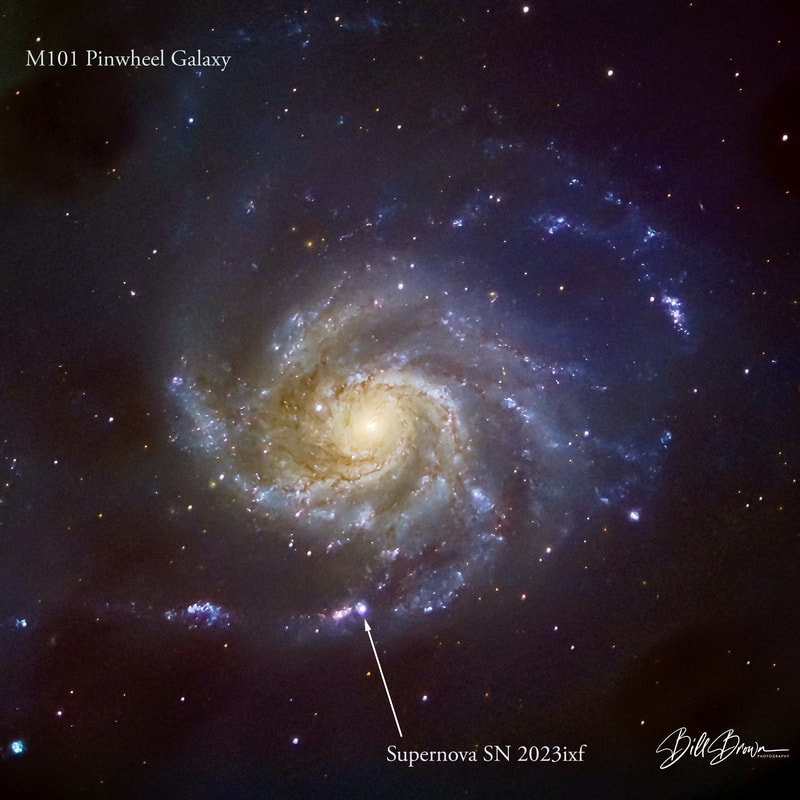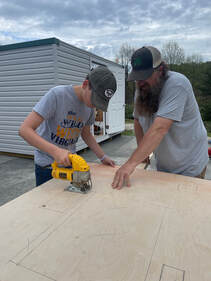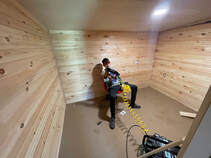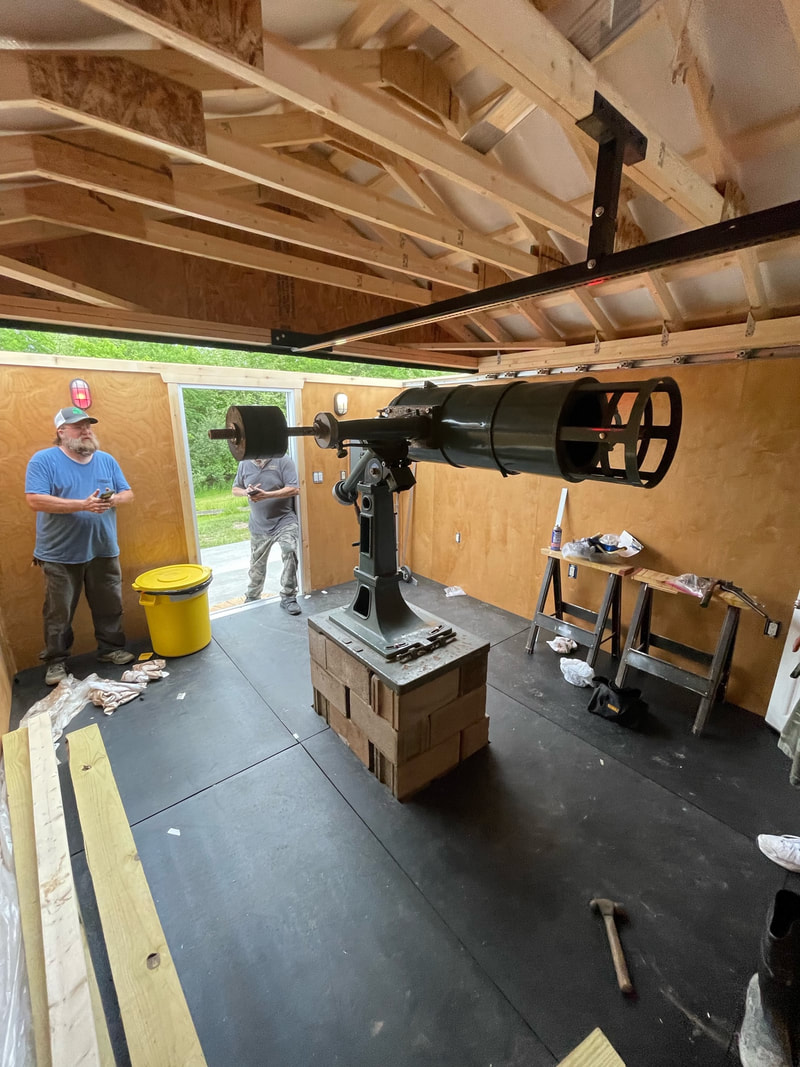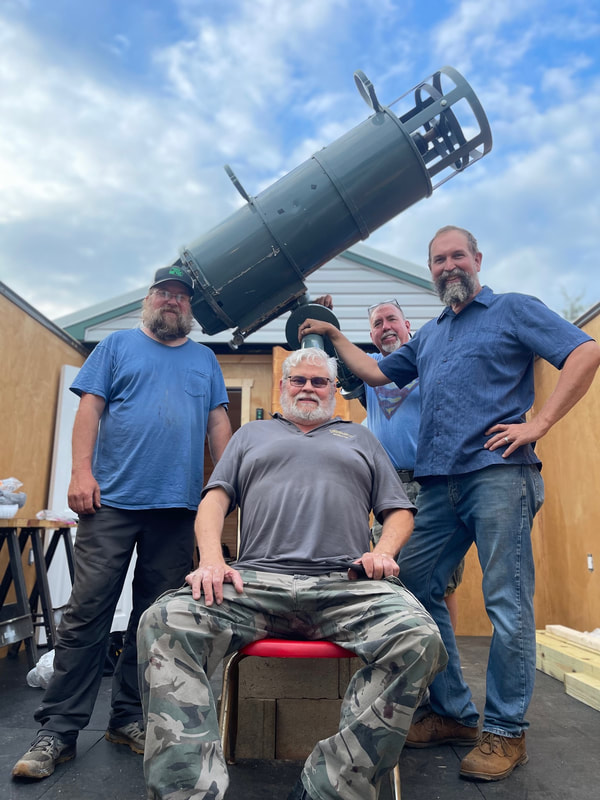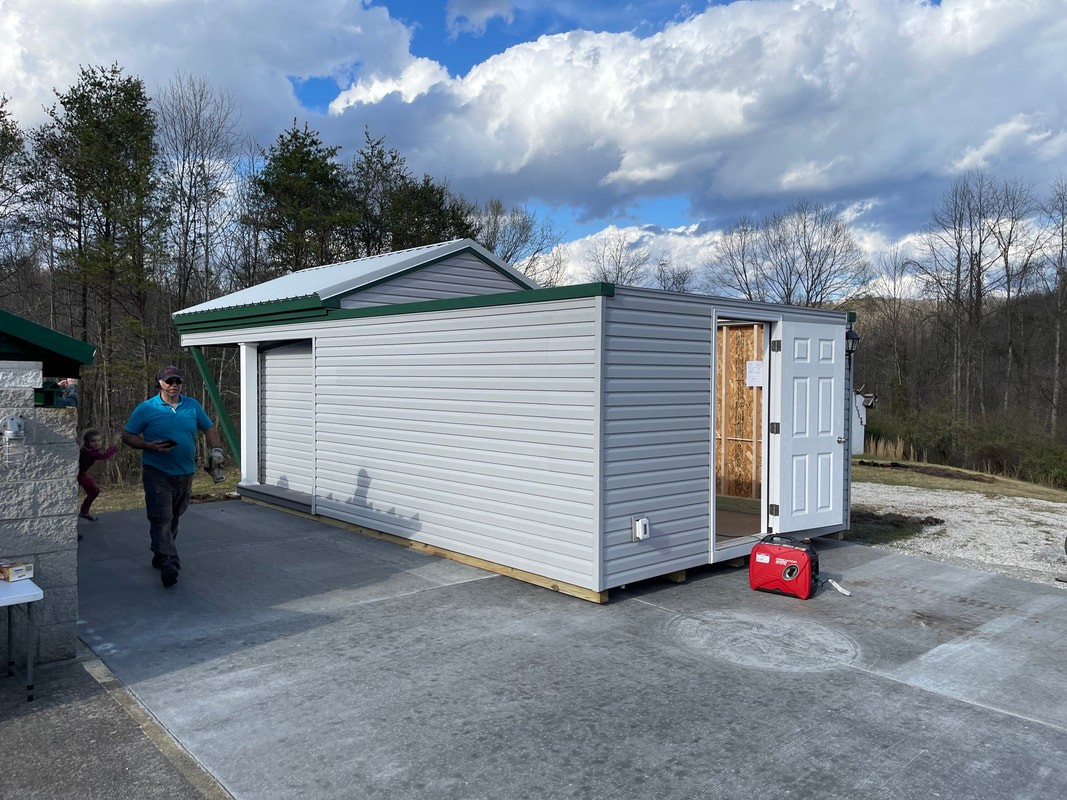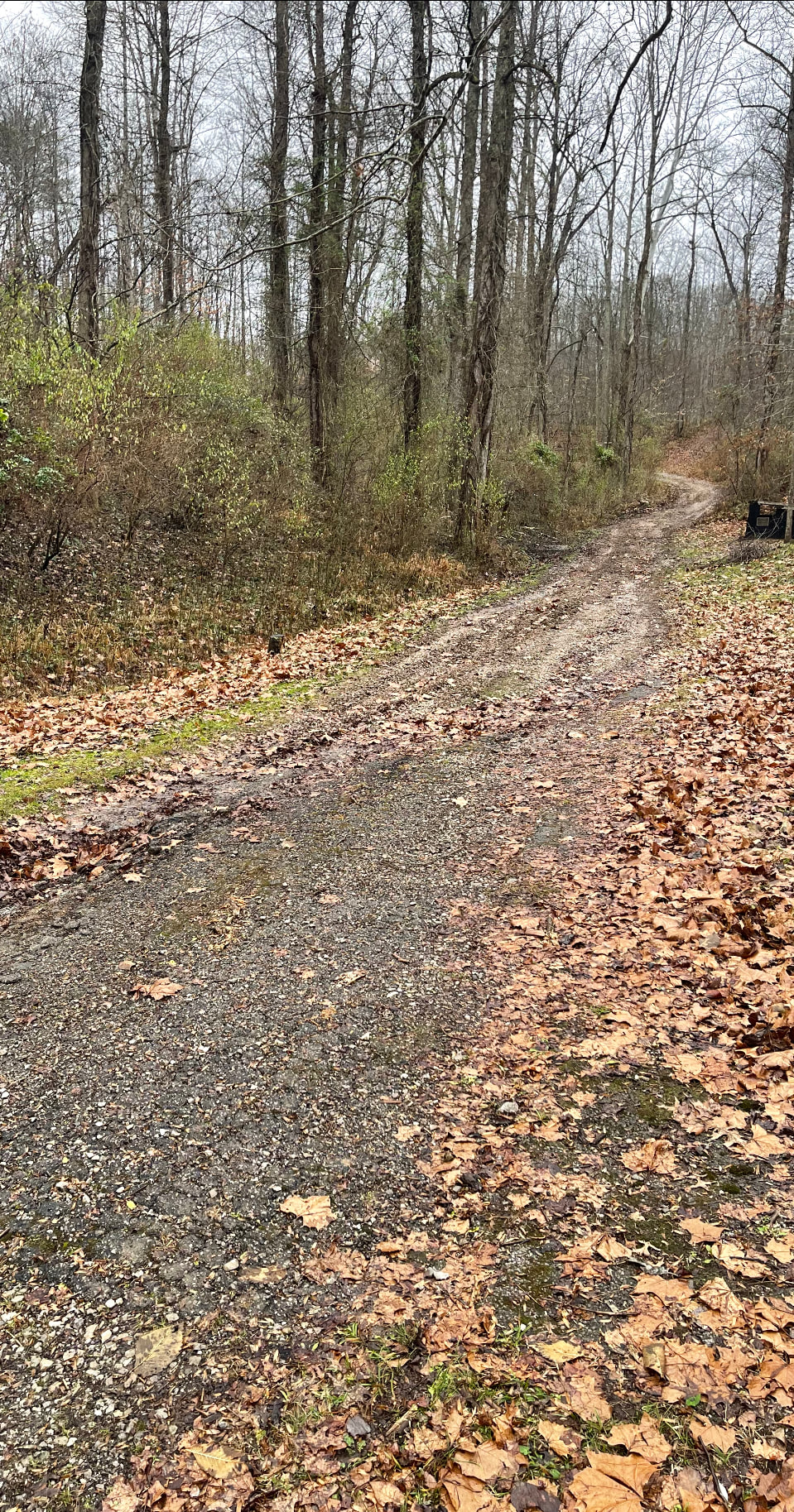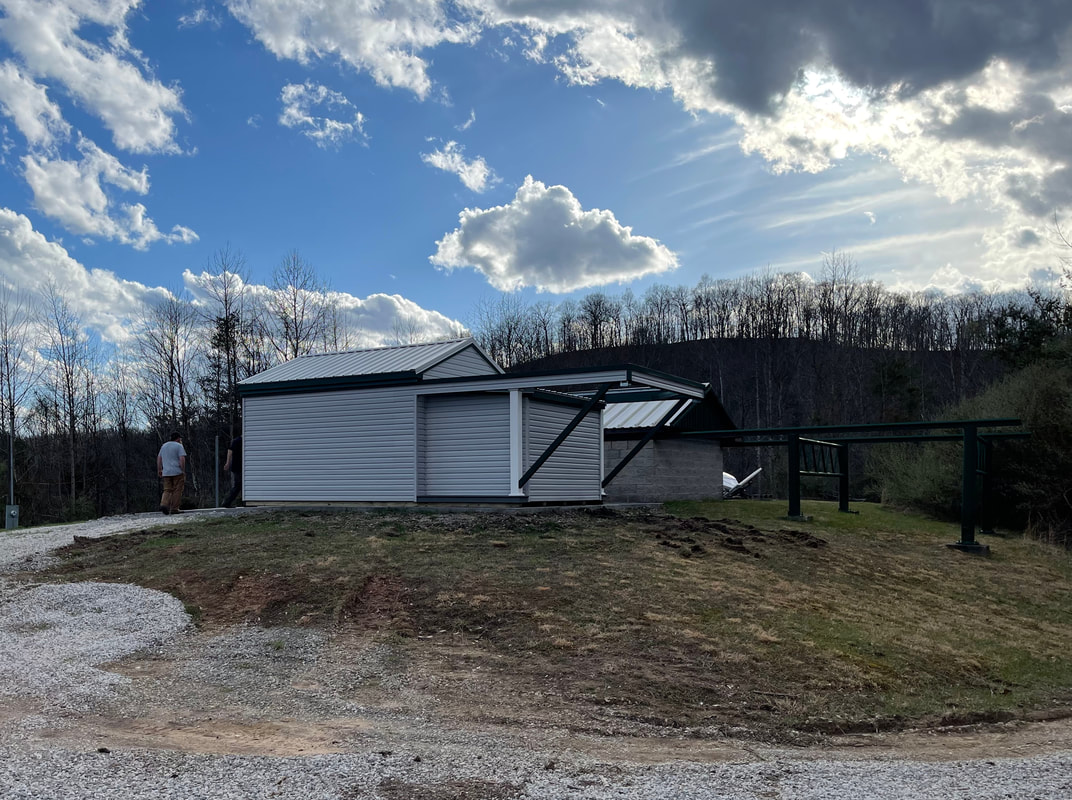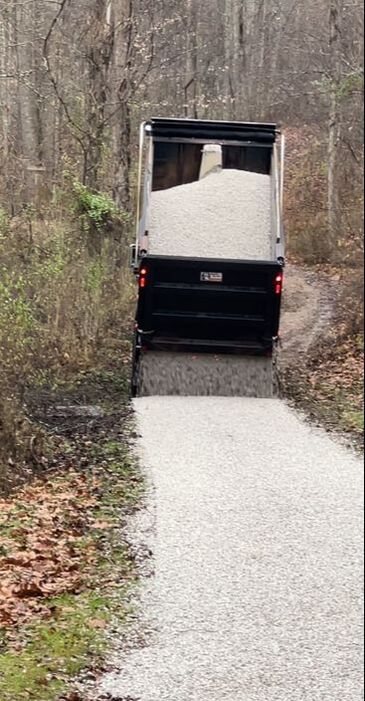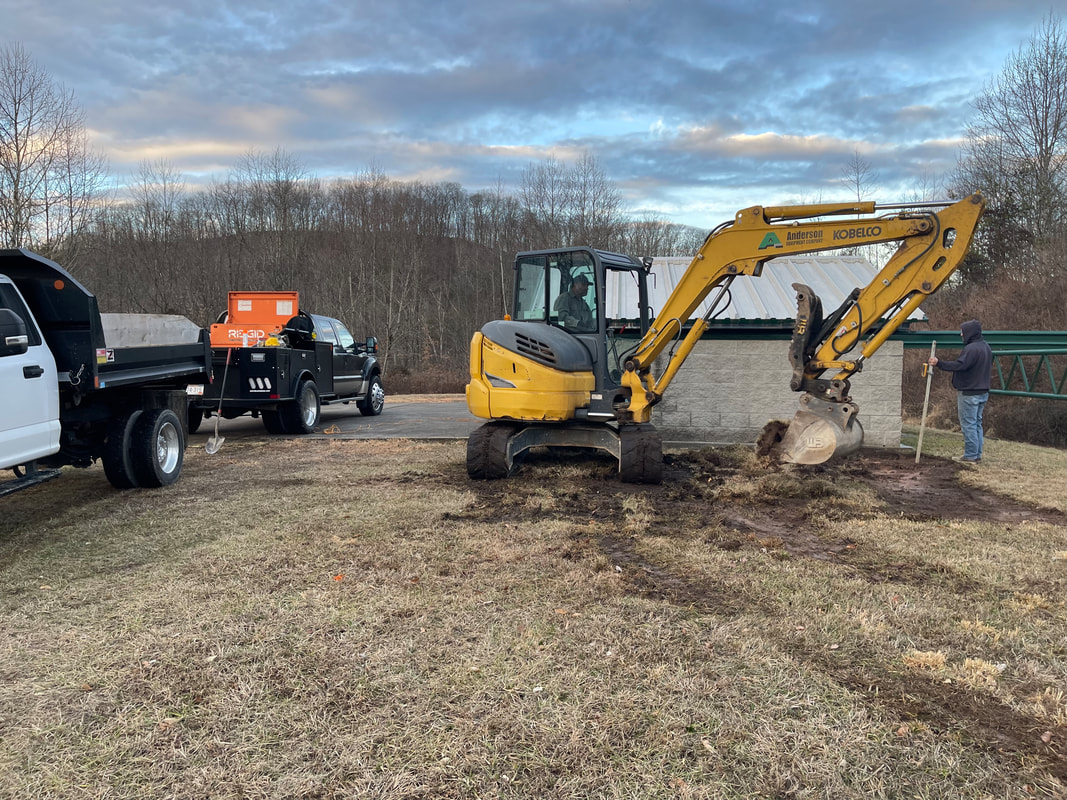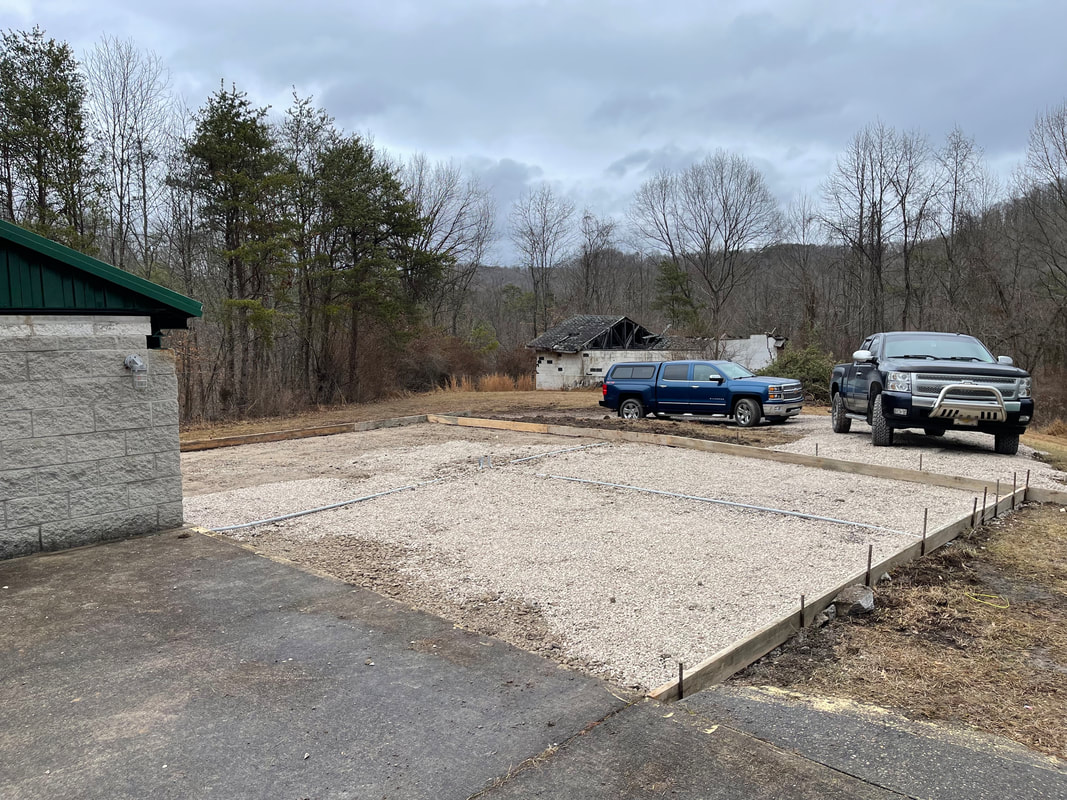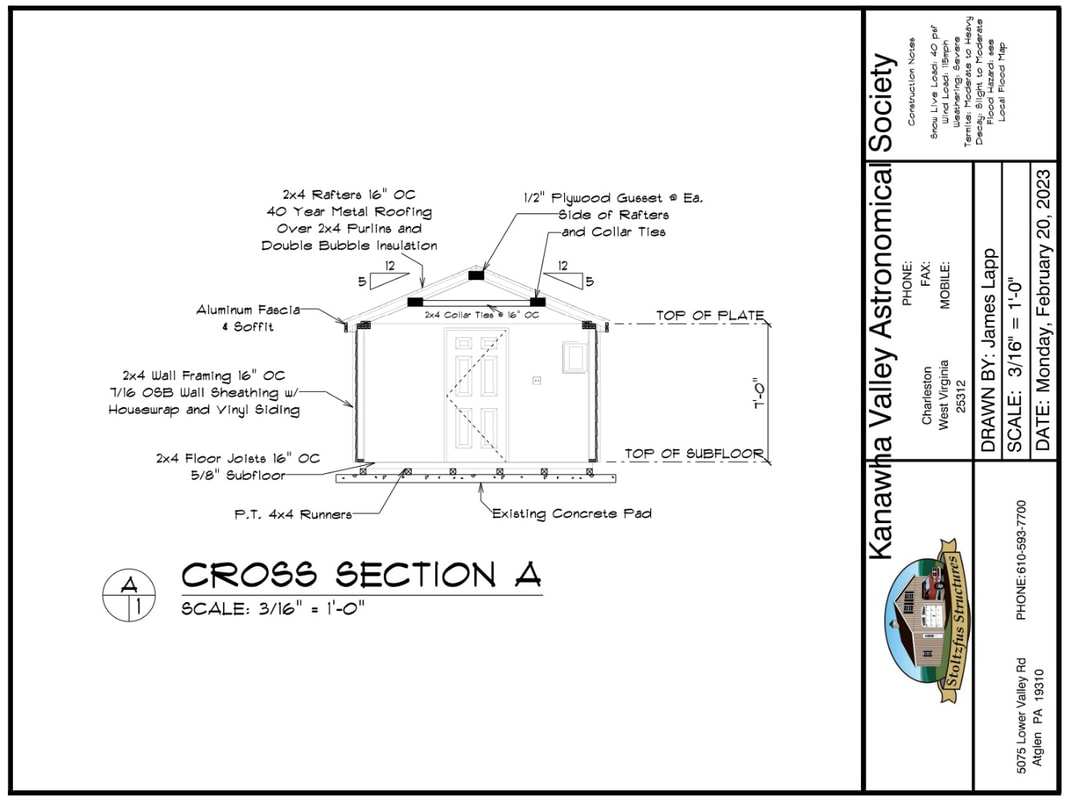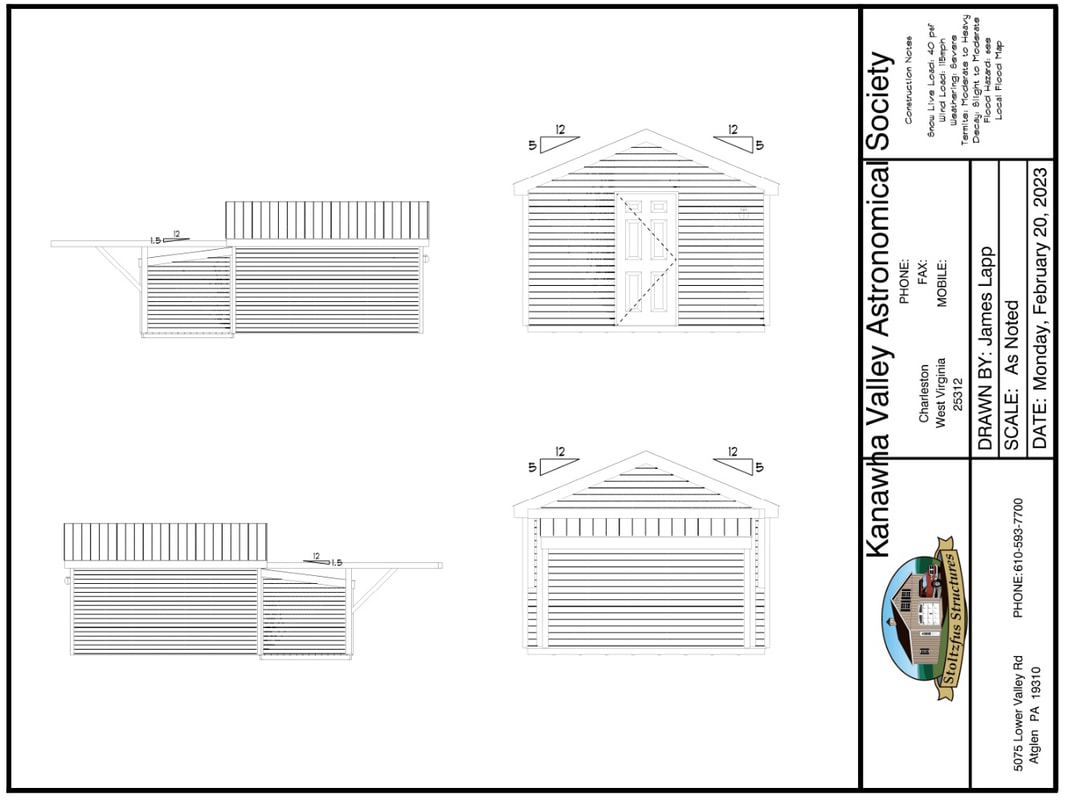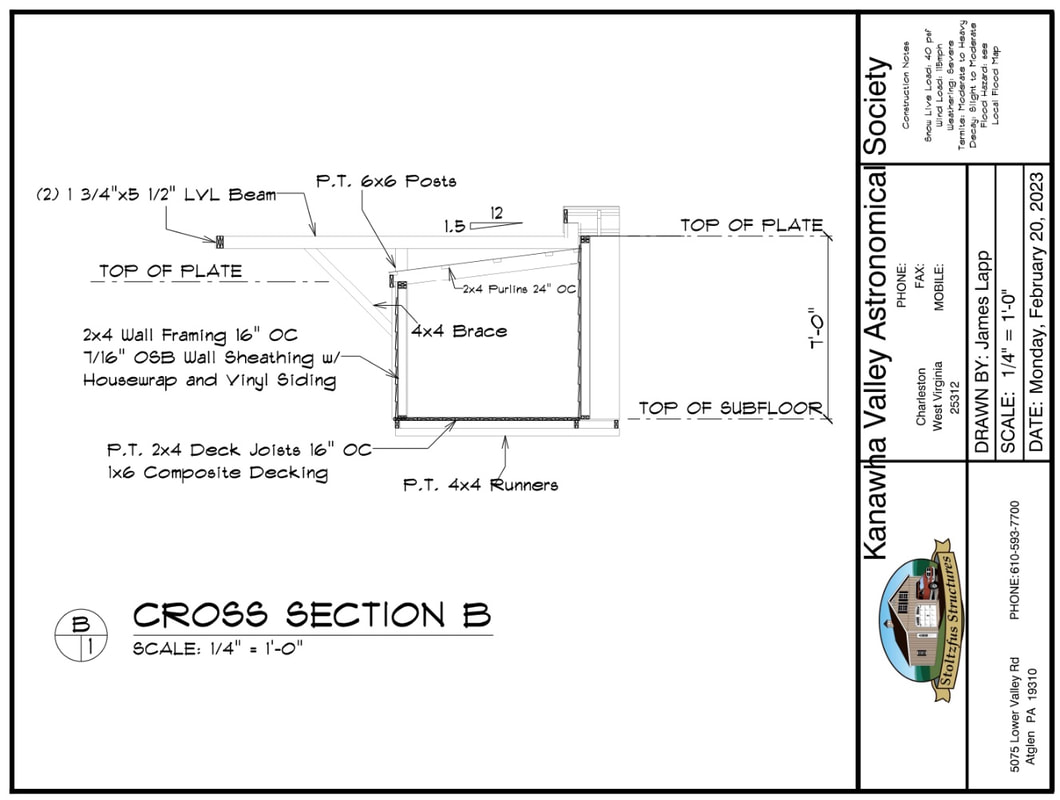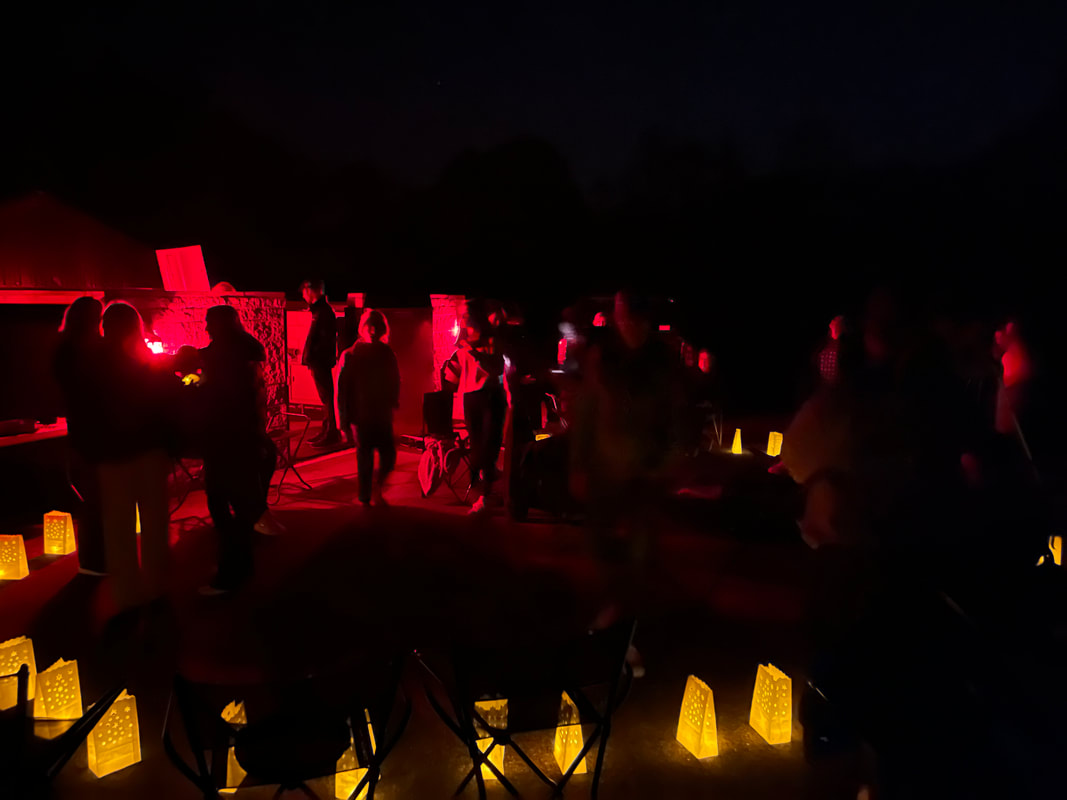KVAS has now migrated to a new domain and this site is no longer maintained
The new site is www.kvaswv.org
Please update your website bookmark
_
The Kanawha Valley Astronomical Society is a non-profit educational organization. We are dedicated to the promotion of amateur astronomy in and around the West Virginia area and work closely with local schools and the Avampato Discovery Museum at the Clay Center for the Arts and Sciences.
The Kanawha Valley Astronomical Society operates and maintains Breezy Point Observatory, located at Camp Virgil Tate, near Cross Lanes, West Virginia. This rolling-roof design observatory houses the club's 16" F-4.5 Newtonion Reflector Telescope. Breezy Point Observatory is host to many of the club's monthly meetings as well as a number of star parties each year.
Since 1987, the Kanawha Valley Astronomical Society has partnered with the West Virginia Division of Natural Resources and Blackwater Falls State Park to host Astronomy Weekend. This annual event takes place every fall in Davis, WV, under incredible dark skies that are an astronomer and astrophotographers dream come true. In 2023 Kanawha Valley Astronomical Society expanded the partnership to host a second annual opportunity called Astrophotography Weekend. Come explore with us!
The Kanawha Valley Astronomical Society is a non-profit educational organization. We are dedicated to the promotion of amateur astronomy in and around the West Virginia area and work closely with local schools and the Avampato Discovery Museum at the Clay Center for the Arts and Sciences.
The Kanawha Valley Astronomical Society operates and maintains Breezy Point Observatory, located at Camp Virgil Tate, near Cross Lanes, West Virginia. This rolling-roof design observatory houses the club's 16" F-4.5 Newtonion Reflector Telescope. Breezy Point Observatory is host to many of the club's monthly meetings as well as a number of star parties each year.
Since 1987, the Kanawha Valley Astronomical Society has partnered with the West Virginia Division of Natural Resources and Blackwater Falls State Park to host Astronomy Weekend. This annual event takes place every fall in Davis, WV, under incredible dark skies that are an astronomer and astrophotographers dream come true. In 2023 Kanawha Valley Astronomical Society expanded the partnership to host a second annual opportunity called Astrophotography Weekend. Come explore with us!
You can also visit us on Facebook.
Click on the icons below to open the Facebook page or to contact us by email.
KVAS cohost a Messier Marathon with WVAA at Breezy Point
Photo Credit Jonathan Eggleston
KVAS and WVAA joined forces to host a Messier Marathon on 3/16/2023 at Camp Virgil Tate. The event was ran by Dual members, Dave Roberts, Jay Young and Bill Brown. Camp Virgil Tate also had their 4H Special Interest Astronomy group at the event.
A Messier Marathon is an all night Star Party where members attempt to view and or photograph all 110 objects in the Messier Catalog. The catalog is named for Charles Messier (June 26, 1730 - April 12, 1817). Charles was a French Astronomer, who published a catalog of Nebulae, galaxies and star clusters and are designated with the letter M followed by a number between 1 and 110. The purpose was to aid astronomers in distinguishing transient and permanent diffused objects in the sky. In his quest to track and hunt down comets he created the catalog to identify objects that were not comets. He was credited with discovering 40 nebulae and 13 comets and earned the nickname Ferret of Comets. Messier was credited with 17 discoveries and himself added 40 objects to the catalog. The lunar crater Messier and the Asteroid 7359 Messier were named in his honor.
Although the clouds rolled in and prevented pursuing getting into the challenge of the marathon, a good time was had by all. Below you can see the crowd starting to gather in preparation.
KVAS and WVAA joined forces to host a Messier Marathon on 3/16/2023 at Camp Virgil Tate. The event was ran by Dual members, Dave Roberts, Jay Young and Bill Brown. Camp Virgil Tate also had their 4H Special Interest Astronomy group at the event.
A Messier Marathon is an all night Star Party where members attempt to view and or photograph all 110 objects in the Messier Catalog. The catalog is named for Charles Messier (June 26, 1730 - April 12, 1817). Charles was a French Astronomer, who published a catalog of Nebulae, galaxies and star clusters and are designated with the letter M followed by a number between 1 and 110. The purpose was to aid astronomers in distinguishing transient and permanent diffused objects in the sky. In his quest to track and hunt down comets he created the catalog to identify objects that were not comets. He was credited with discovering 40 nebulae and 13 comets and earned the nickname Ferret of Comets. Messier was credited with 17 discoveries and himself added 40 objects to the catalog. The lunar crater Messier and the Asteroid 7359 Messier were named in his honor.
Although the clouds rolled in and prevented pursuing getting into the challenge of the marathon, a good time was had by all. Below you can see the crowd starting to gather in preparation.
Image Credit Bill Brown.
KVAS Grand Opening of The Waugh-Haxton Observatory at Breezy Point November 4,2023 10:00 AM - 1:00 PM.
|
Come out and celebrate the grand opening of the Waugh-Haxton Observatory located at Breezy Point at Camp Virgil Tate. There will be HotDogs and softdrinks served during the opening and a Star Party at Dusk with Hot Coco and Apple Cider along with Cookies.
If you would like further details please email president@kvas.org |
A New Supernova appears in the sky.
A new Supernova is in our night sky! photo credit: Member Bill Brown the image was taken on May 31,2023 in Tornado, WV and has 4hours of integration time. The image was captured with a Celestron 11" SCT with a ZWO 294MC camera.
A supernova is what happens when a star has reached the end of its life and explodes in a brilliant burst of light. Supernovae can briefly outshine entire galaxies and radiate more energy than our sun will in its entire lifetime. They're also the primary source of heavy elements in the universe. According to NASA, supernovae are "the largest explosion that takes place in space."
Various civilizations recorded supernovae long before the telescope was invented in the 17th century. The oldest recorded supernova is RCW 86, which Chinese astronomers spotted in A.D. 185. Their records show that this "guest star" stayed in the sky for eight months, according to NASA.
The last supernova directly observed in the Milky Way was Kepler's Supernova in 1604, appearing not long after Tycho's Supernova in 1572, both of which were visible to the naked eye. The remnants of more recent supernovae have been found, and observations of supernovae in other galaxies suggest they occur in the Milky Way on average about three times every century. A supernova in the Milky Way would almost certainly be observable through modern astronomical telescopes. The most recent naked-eye supernova was SN 1987A, which was the explosion of a blue supergiant star in the Large Magellanic Cloud, a satellite of the Milky Way.
A supernova is what happens when a star has reached the end of its life and explodes in a brilliant burst of light. Supernovae can briefly outshine entire galaxies and radiate more energy than our sun will in its entire lifetime. They're also the primary source of heavy elements in the universe. According to NASA, supernovae are "the largest explosion that takes place in space."
Various civilizations recorded supernovae long before the telescope was invented in the 17th century. The oldest recorded supernova is RCW 86, which Chinese astronomers spotted in A.D. 185. Their records show that this "guest star" stayed in the sky for eight months, according to NASA.
The last supernova directly observed in the Milky Way was Kepler's Supernova in 1604, appearing not long after Tycho's Supernova in 1572, both of which were visible to the naked eye. The remnants of more recent supernovae have been found, and observations of supernovae in other galaxies suggest they occur in the Milky Way on average about three times every century. A supernova in the Milky Way would almost certainly be observable through modern astronomical telescopes. The most recent naked-eye supernova was SN 1987A, which was the explosion of a blue supergiant star in the Large Magellanic Cloud, a satellite of the Milky Way.
Observatories and Scopes
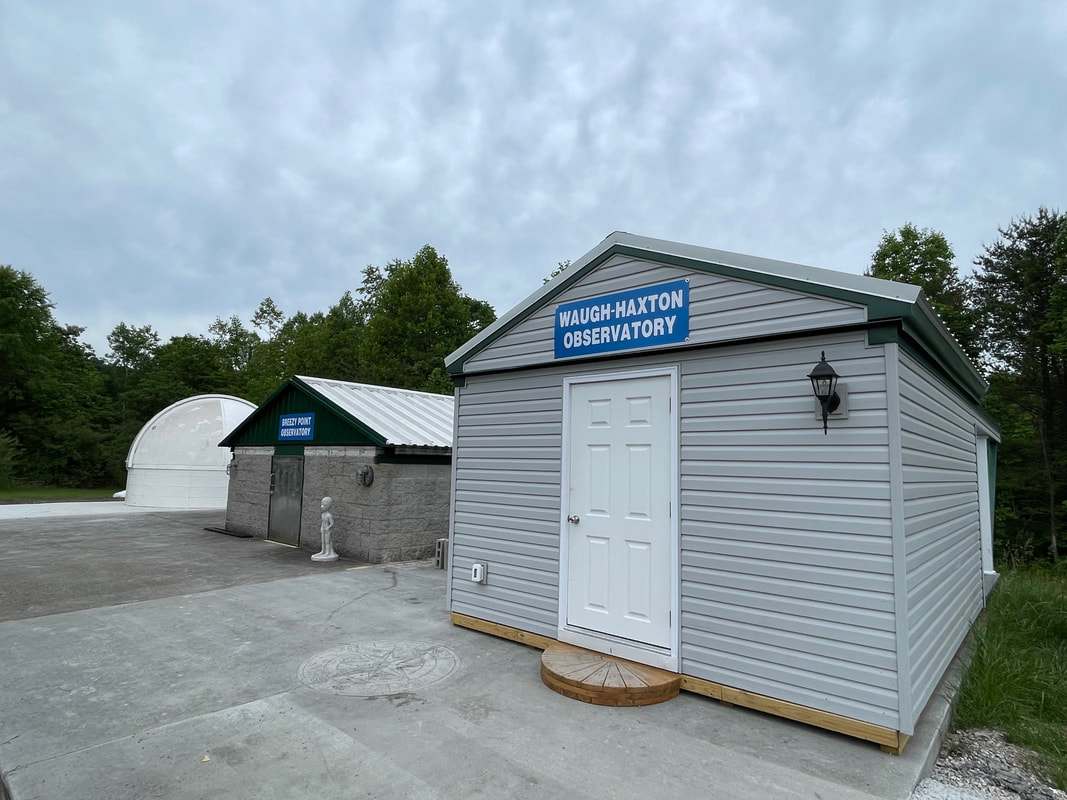
The 16" Newtonian scope mounted in Breezy Point Observatory was donated by Chuck Spann and has served as the workhorse for our club. It provides outstanding viewing during star parties and observation sessions for our members and guest.
Exciting news! - KVAS is almost ready for a grand opening of our second observatory, the Waugh-Haxton Observatory to house a historic Cassegrain telescope donated by Ruth Haxton. It will be a great F10 complement to our current telescope.
More expansion is currently underway and expected to finish soon as Lorenzo Shortt has taken on the project to erect a 15' Dome observatory donated by Scott Miller as his Eagle Scout project. It will be named in honor of Scott's daughters, the Verileith Observatory. Member Lewis Cook generously provided funding for the concrete pad expansion for this Observatory.
Click on image to enlarge
Exciting news! - KVAS is almost ready for a grand opening of our second observatory, the Waugh-Haxton Observatory to house a historic Cassegrain telescope donated by Ruth Haxton. It will be a great F10 complement to our current telescope.
More expansion is currently underway and expected to finish soon as Lorenzo Shortt has taken on the project to erect a 15' Dome observatory donated by Scott Miller as his Eagle Scout project. It will be named in honor of Scott's daughters, the Verileith Observatory. Member Lewis Cook generously provided funding for the concrete pad expansion for this Observatory.
Click on image to enlarge
Meetings
Meetings are held the third Friday of the month. The manager of Camp Virgil Tate, Jason Young, has graciously allowed us to meet on site at Camp Virgil Tate allowing us easy access to our Breezy Point Observatory following our meetings. Due to winter dark hours we have adjusted our meeting time. Meetings will now resume winter hours (6:00PM) Our next members meeting will be on Friday, Nov 15 at 6:00 p.m. at Camp Virgil Tate conference room.
Driving Directions to KVAS: To get to Camp Virgil Tate, take Interstate 64 to the Cross Lanes exit. At the end of the ramp, turn to go to Cross Lanes (away from the dog track) and follow Route 622. You will go through Cross Lanes and travel about 4 miles before 622 takes a left turn at a light. Take the left. You will continue for several miles over a curvy road with a few sharp turns and then pass the Baber Agee Church on your right. The turn into Camp Virgil Tate is about 1 mile past the church. The turn (to the left) is marked by a small green sign on the right side of the road. This turn will take you across a bridge and to a small paved road. Camp Virgil Tate is about 1 mile out the road. Once you enter Camp Virgil Tate, go through Virgil Tate to the first intersection and turn left. The Lodge is on the right.
Traveling southon I77 to Camp Virgil Tate. Take the Tuppers Creek exit. At the end of the ramp, take a left. Go a little more than 1 mile to the intersection with Route 21. Take a right. Go a little over a mile, past Sissonsville High School and take a left at the light onto Route 622. There is a fairly large sign to Camp Virgil Tate at the turn. Camp Virgil Tate is a right turn 4.4 miles from that intersection.
Driving Directions to KVAS: To get to Camp Virgil Tate, take Interstate 64 to the Cross Lanes exit. At the end of the ramp, turn to go to Cross Lanes (away from the dog track) and follow Route 622. You will go through Cross Lanes and travel about 4 miles before 622 takes a left turn at a light. Take the left. You will continue for several miles over a curvy road with a few sharp turns and then pass the Baber Agee Church on your right. The turn into Camp Virgil Tate is about 1 mile past the church. The turn (to the left) is marked by a small green sign on the right side of the road. This turn will take you across a bridge and to a small paved road. Camp Virgil Tate is about 1 mile out the road. Once you enter Camp Virgil Tate, go through Virgil Tate to the first intersection and turn left. The Lodge is on the right.
Traveling southon I77 to Camp Virgil Tate. Take the Tuppers Creek exit. At the end of the ramp, take a left. Go a little more than 1 mile to the intersection with Route 21. Take a right. Go a little over a mile, past Sissonsville High School and take a left at the light onto Route 622. There is a fairly large sign to Camp Virgil Tate at the turn. Camp Virgil Tate is a right turn 4.4 miles from that intersection.
Upcoming StarParties:
Monthly starparties are held following the members meeting on the third Friday of the month.currently on hold
Contact us if you are interested in having a starparty at our observatories at Camp Virgil Tate for your group. Email: president@kvas.org
Annual Election DinnerKVAS Annual election of officers dinner was held at Hardings Friday Jan 19th at 6PM. All positions were elected. Several members were present for the nominations and elections.
2023 has been an exciting year!
KVAS and WVAA hosted an AstroPhotography Weekend at BlackWater Falls on July 14-15th in addition to Astronomy Weekend on September 14-16. The keynote speaker in July was Nico Carver from Nebula Photos. We will had an opportunity for live viewing from Cypress Island of Saturn and Jupiter along with a presentation in planetary imaging. We will also had a presentation from Craig Stocks remotely from Utah. Visit the Events page for more details. Thank you for joining us for a both weekends of seminars and star parties under the dark skies at BlackWater Falls. Astrophotography Weekend July 14-15, 2023 Observatory #3 Project is fully underway.
Lorenzo Shortt, an Eagle scout has taken on the role as project manager to construct a 15' Dome Observatory on our site. The Dome was donated by Scott Miller. Members Bill Brown and Aaron Brown installed the electrical conduits. The boy scouts organized by Lorenzo, did earth work just west of the existing concrete pads at Breezy Point. The scouts then formed for new pads along with club members Jason Young, Bill Brown and Aaron Brown, and Rodney Waugh followed by pouring and finished 12 yards of concrete donated by Lewis Cook for the dome as well as provide space to set up telescopes south of the observatory. A lot of work was completed by the scouts and club members so far. UPDATE* The Dome has been constructed and power ran to the dome. There is a main power box and two GFCI outlets installed. Next will be the shutter cabling and rotation motors hookups. The Dome was raised on Saturday May 27, 2023. A full day of re-engineering assembly and a lot of hard work done by all involved. The dome will still need the shutter final manual install, the dome anchored to the pad, then motorization of the shutter and rotation after electric is installed in the dome. The scouts also assisted in pouring the pier in the Waugh-Haxton Observatory while waiting on a parts run.
|
Latest update for the Waugh-Haxton observatory:
KVAS is preparing for the Grand Opening of the Waugh-Haxton Observatory. We have a motor that has been adapted to the scope gear. Installation of the motor will happen soon. The electrical work is completed as well as the inner wall coverings. HVAC for the warm/cool room has been donated by Robert Dean and has been installed. The rubber floor is also installed in the observatory room. A step and motor cover was made by Ed Conners. The pier is formed up and will be poured on May 27th to hold the Haxton Telescope. A huge thanks to Bill Brown, Aaron Brown, Jayson Young, Rodney & Judy Waugh, Ed Conners, Dan Hayne, and Robert Dean for the work on this phase.
KVAS is preparing for the Grand Opening of the Waugh-Haxton Observatory. We have a motor that has been adapted to the scope gear. Installation of the motor will happen soon. The electrical work is completed as well as the inner wall coverings. HVAC for the warm/cool room has been donated by Robert Dean and has been installed. The rubber floor is also installed in the observatory room. A step and motor cover was made by Ed Conners. The pier is formed up and will be poured on May 27th to hold the Haxton Telescope. A huge thanks to Bill Brown, Aaron Brown, Jayson Young, Rodney & Judy Waugh, Ed Conners, Dan Hayne, and Robert Dean for the work on this phase.
The second Observatory design is below. There will be an observation room as well as a warm room that can be environmentally controlled.
|
|
A luminary vigil was held at the observatory for Leah Strickland from Herbert Hoover by friends after a church star party held on Sat Oct 15th 2022.
Photos from Astronomy Weekend 2022 at Blackwater Falls State Park
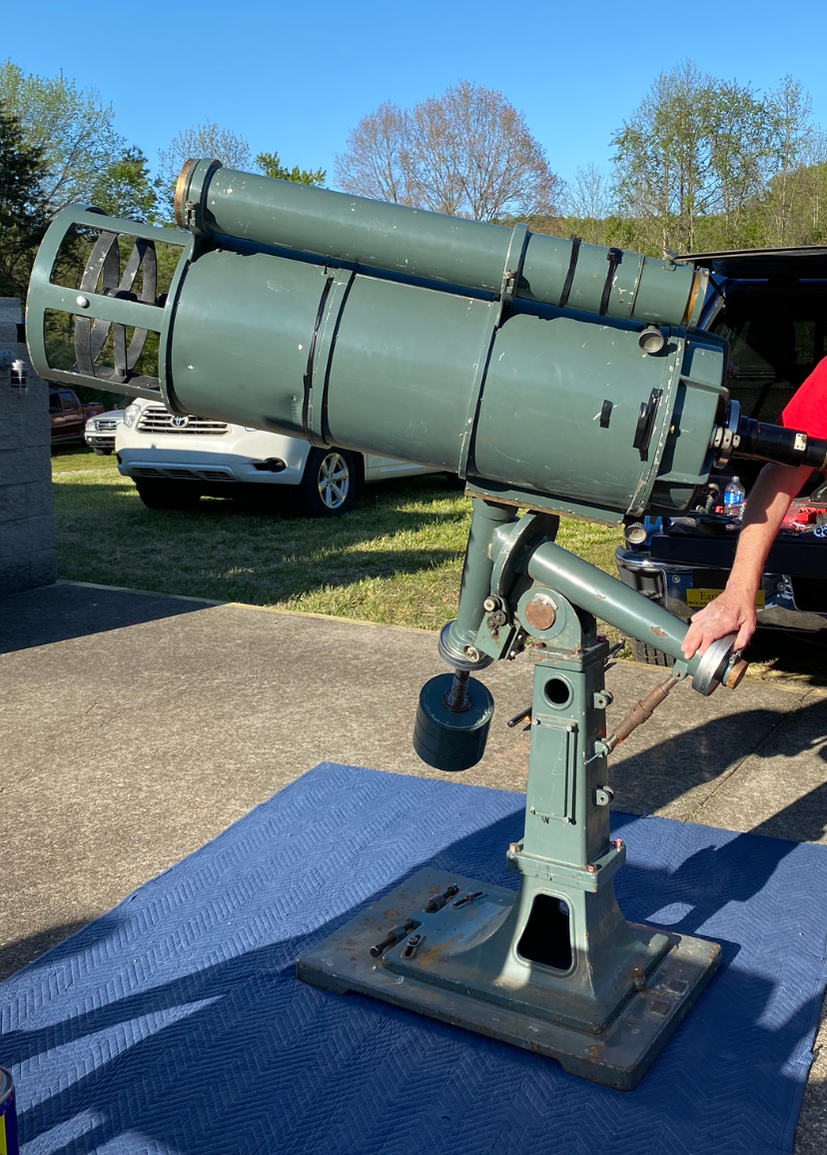
The Don Haxton Telescope
This Telescope has a long history. It was built in Japan in 1938 by the GOTO Telescope Company for the University of Tokyo. It is a 12” cassegrain reflector F/10 telescope. It was placed on top of a mountain on one of the islands of Okinawa. It was used for astronomy and during World War ll, I am certain it was also used to search for US ships and planes.
After the war, the US Navy confiscated it and took it to the US Naval Academy at Annapolis Maryland where it was used to teach astronomy and stellar navigation. It remained there for several years until Goddard Space Flight Center at Greenbelt Maryland needed it for the Apollo Program. It was used to monitor the Sun for radioactive solar storms that would endanger the Apollo Astronauts when they were outside the Earth’s protective magnetosphere, to and from the Moon.
After the Apollo Program, an employee at Goddard named Donovan M. Haxton Jr used the telescope for star parties with his students from a local collage where he taught astronomy.
After the terrorist attack of 9/11, security was increased and the college students were no longer allowed on the property. The telescope fell into disuse. Don Haxton was able to purchase the telescope before he retired.
Donovan M. Haxton Jr. passed away on May 10, 2016. He was a scientist in every sense of the word. His wife, Judith Haxton passed away on October 12, 2020. They left two Daughters, Lilah Haxton and Ruth Huffman.
The Haxton Family attended the fall event, Astronomy Weekend at Blackwater Falls State Park for many years. This event is sponsored by the Kanawha Valley Astronomical Society and the State Park. Astronomy Weekend started in 1988 and continues to this day. They enjoyed various activities including star parties, astronomy talks, (Don Haxton gave several talks) the raffle drawings or sitting around the lounge exchanging experiences and tall tales. Of course the park itself is a major attraction.
In February of 2021 Ruth Huffman contacted Janet Willson and offered the 12” telescope to the Kanawha Valley Astronomical Society that is based in Kanawha Valley, West Virginia. After 3 snow delays, Rodney Waugh, Judy Waugh and Scott Blake traveled to the Haxton house at Laurel Maryland, on Whiskey Bottom Road. It is located between Washington DC and Baltimore. We brought the telescope back and stored it at Rodney’s house.
The Kanawha Valley Astronomical Society thanks the Haxton Family for this valuable donation.
Don’t mistake goto for the modern telescopes we have today. That is the name of the Japanese company that built the telescope. They are still in business.
The telescope is a 12” cassegrain reflector, F/10. The six foot long tube sits on an equatorial mount that has two axis that are arranged 90 degrees to each other. One axis is aimed toward the north star, Polaris. The telescope is equipped with a clock drive on that axis, that makes one rotation per day, just like the Earth does. This allows the telescope to track the stars.
Now, this telescope is built very heavy. It weighs several hundred pounds and sits on a cast iron base nearly 2 feet by 3 feet. The pedestal is also cast, in two sections. An electrical control panel is on the lower section. The two bearings on each of the mounts axis are nearly 2 feet apart. Each axis has two knobs to make fine adjustments and another knob to adjust the stiffness of each axis. Installing the counterweights is a two man job! The tube is built with six 1 1/8” pipes that run from end to end and five rings that make up four sections. The tube is surrounded with sheet metal to block outside light. It has has two access doors, one for each mirror. The 12” primary mirror has a 2” hole in it’s center for light to pass thru to the eyepiece and is located at the base of the tube. It is housed in a mount that has three sets of knobs. Each set has three knobs, a push, pull, and a locking knob. The three knobs are situated one directly behind the other. This allows the mirror to be precisely collimated. The 3 1/2” secondary mirror located at the far end of the tube has three adjustments for it’s collimation. Behind the primary mirror is a foot long rack and pinion focuser that holds the eyepiece.
The telescope is an F/10 which means that the primary mirror focus is ten times it’s diameter. The magnification is determined by dividing the length of the focus of the primary mirror by the length of the focus of the eyepiece. For example, 3,048mm divided by a 10mm focal length eyepiece gives a magnification of 304.8. This is an excellent telescope for the moon, planets, double stars and narrow deep space objects.
The telescope also incorporates a 4” F/15 refractor. This 4” telescope can be used visually or with a star micrometer that is also included. It can be used, over a period of time, to detect movement between two astronomical objects. To do this, you find a “suspect” object, record the readings and find a nearby star and record the second readings off of the micrometer. After a week or more, compare the new readings with the first ones. If there is a difference, you may have discovered a solar system object. Now, by measuring off the suspect object and 0several other objects, you can plot a path of movement over time.
The Kanawha Valley Astronomical Society plans to build an observatory to house this telescope with a sliding roof, similar to the existing Breezy Point Observatory, located at Camp Virgil Tate. Breezy Point Observatory houses a 16” newtonian reflector telescope on a Astro-Physics goto mount that aims itself.
The Kanawha Valley Astronomical Society is a non-profit educational organization. We are dedicated to the promotion of amateur astronomy in and around the West Virginia area and work closely with local schools and the Avampato Discovery Museum at the Clay Center for the Arts and Sciences.
Rodney Waugh
11/8/21
This Telescope has a long history. It was built in Japan in 1938 by the GOTO Telescope Company for the University of Tokyo. It is a 12” cassegrain reflector F/10 telescope. It was placed on top of a mountain on one of the islands of Okinawa. It was used for astronomy and during World War ll, I am certain it was also used to search for US ships and planes.
After the war, the US Navy confiscated it and took it to the US Naval Academy at Annapolis Maryland where it was used to teach astronomy and stellar navigation. It remained there for several years until Goddard Space Flight Center at Greenbelt Maryland needed it for the Apollo Program. It was used to monitor the Sun for radioactive solar storms that would endanger the Apollo Astronauts when they were outside the Earth’s protective magnetosphere, to and from the Moon.
After the Apollo Program, an employee at Goddard named Donovan M. Haxton Jr used the telescope for star parties with his students from a local collage where he taught astronomy.
After the terrorist attack of 9/11, security was increased and the college students were no longer allowed on the property. The telescope fell into disuse. Don Haxton was able to purchase the telescope before he retired.
Donovan M. Haxton Jr. passed away on May 10, 2016. He was a scientist in every sense of the word. His wife, Judith Haxton passed away on October 12, 2020. They left two Daughters, Lilah Haxton and Ruth Huffman.
The Haxton Family attended the fall event, Astronomy Weekend at Blackwater Falls State Park for many years. This event is sponsored by the Kanawha Valley Astronomical Society and the State Park. Astronomy Weekend started in 1988 and continues to this day. They enjoyed various activities including star parties, astronomy talks, (Don Haxton gave several talks) the raffle drawings or sitting around the lounge exchanging experiences and tall tales. Of course the park itself is a major attraction.
In February of 2021 Ruth Huffman contacted Janet Willson and offered the 12” telescope to the Kanawha Valley Astronomical Society that is based in Kanawha Valley, West Virginia. After 3 snow delays, Rodney Waugh, Judy Waugh and Scott Blake traveled to the Haxton house at Laurel Maryland, on Whiskey Bottom Road. It is located between Washington DC and Baltimore. We brought the telescope back and stored it at Rodney’s house.
The Kanawha Valley Astronomical Society thanks the Haxton Family for this valuable donation.
Don’t mistake goto for the modern telescopes we have today. That is the name of the Japanese company that built the telescope. They are still in business.
The telescope is a 12” cassegrain reflector, F/10. The six foot long tube sits on an equatorial mount that has two axis that are arranged 90 degrees to each other. One axis is aimed toward the north star, Polaris. The telescope is equipped with a clock drive on that axis, that makes one rotation per day, just like the Earth does. This allows the telescope to track the stars.
Now, this telescope is built very heavy. It weighs several hundred pounds and sits on a cast iron base nearly 2 feet by 3 feet. The pedestal is also cast, in two sections. An electrical control panel is on the lower section. The two bearings on each of the mounts axis are nearly 2 feet apart. Each axis has two knobs to make fine adjustments and another knob to adjust the stiffness of each axis. Installing the counterweights is a two man job! The tube is built with six 1 1/8” pipes that run from end to end and five rings that make up four sections. The tube is surrounded with sheet metal to block outside light. It has has two access doors, one for each mirror. The 12” primary mirror has a 2” hole in it’s center for light to pass thru to the eyepiece and is located at the base of the tube. It is housed in a mount that has three sets of knobs. Each set has three knobs, a push, pull, and a locking knob. The three knobs are situated one directly behind the other. This allows the mirror to be precisely collimated. The 3 1/2” secondary mirror located at the far end of the tube has three adjustments for it’s collimation. Behind the primary mirror is a foot long rack and pinion focuser that holds the eyepiece.
The telescope is an F/10 which means that the primary mirror focus is ten times it’s diameter. The magnification is determined by dividing the length of the focus of the primary mirror by the length of the focus of the eyepiece. For example, 3,048mm divided by a 10mm focal length eyepiece gives a magnification of 304.8. This is an excellent telescope for the moon, planets, double stars and narrow deep space objects.
The telescope also incorporates a 4” F/15 refractor. This 4” telescope can be used visually or with a star micrometer that is also included. It can be used, over a period of time, to detect movement between two astronomical objects. To do this, you find a “suspect” object, record the readings and find a nearby star and record the second readings off of the micrometer. After a week or more, compare the new readings with the first ones. If there is a difference, you may have discovered a solar system object. Now, by measuring off the suspect object and 0several other objects, you can plot a path of movement over time.
The Kanawha Valley Astronomical Society plans to build an observatory to house this telescope with a sliding roof, similar to the existing Breezy Point Observatory, located at Camp Virgil Tate. Breezy Point Observatory houses a 16” newtonian reflector telescope on a Astro-Physics goto mount that aims itself.
The Kanawha Valley Astronomical Society is a non-profit educational organization. We are dedicated to the promotion of amateur astronomy in and around the West Virginia area and work closely with local schools and the Avampato Discovery Museum at the Clay Center for the Arts and Sciences.
Rodney Waugh
11/8/21
Links
Regional Clubs
Central Appalachian Astronomy Club
Ohio Valley Astronomical Society
Northern Virginia Astronomy Club
Tri-State Astronomers
Morgan County Observatory Foundation
WVU Astronomy Club
Astronomical Club of Southern West Virginia
Shenandoah Astronomical Society
Organizations
Space.com
NASA
International Dark-Sky Association
McDonald Observatory
Astronomy Magazine
The Astronomical League
Sky and Telescope Magazine
Astronomy Picture of the Day
SpaceWeather.com
AccuWeather
Lunar and Planetary Institute
2017 total eclipse of the sun USA
44 Closest Stars
Space Weather Woman
Dealers
Astronomics
Celestron
Scope Stuff
Diffraction
Meade Instruments Corporation
Orion Telescopes and Binoculars



